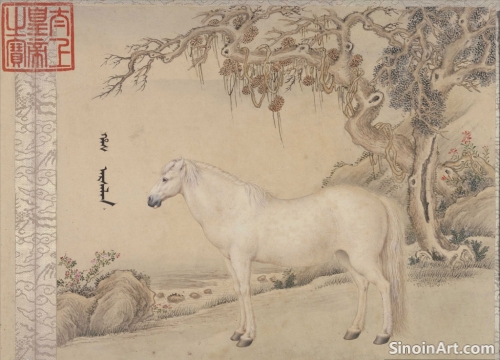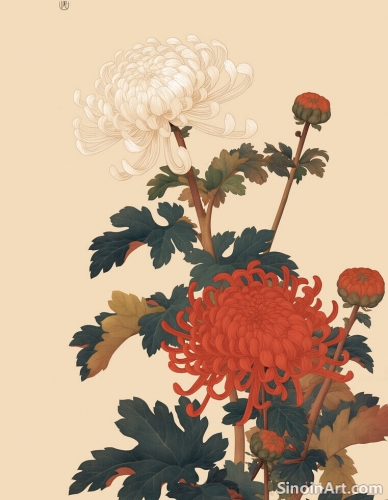The Materials of Gongbi: A Closer Look at Tools and Pigments
|
The materials used in Gongbi painting are just as important as the techniques. The quality of these tools and pigments directly impacts the outcome of the artwork. Traditional Gongbi artists are deeply knowledgeable about the specific properties of each material and how to use them to their advantage. This relationship with the materials is a critical part of the art-making process.  Rice paper (xuan paper), often treated with alum for painting purposes, forms the support for Gongbi paintings. Its delicate texture and absorbent properties require careful handling, but they also allow for the subtle layering of colors that are so characteristic of Gongbi. The variety of rice paper types is significant, with each impacting the final appearance of the work. Choosing the correct paper is the first step in the painting process.  Chinese brushes, typically made of animal hair, are essential for controlling the application of ink and color. Each brush, differing in size, shape, and hair type, is chosen for specific tasks, from fine outlining to applying color washes. The brushes, which often require meticulous care and maintenance, are considered extensions of the artist's hand. Skilled artists understand how to use each brush to achieve the desired effect.  Inksticks, meticulously ground with water on an inkstone, form the essential black pigment used in Gongbi. The grinding process itself is a ritualistic practice that enhances the artist's focus. The quality of the inkstick, along with the grinding process, influences the richness and intensity of the black ink. The use of ink is fundamental in creating the fine outlines that form the basis of Gongbi painting. Natural mineral pigments are the foundation of the vibrant colors in Gongbi paintings. Colors like malachite (green), azurite (blue), and vermilion (red) are derived from finely ground mineral sources. These pigments are mixed with water and applied in multiple thin layers, creating a luminous and rich visual effect. The preparation of these pigments is a time-consuming process, but one that is integral to achieving the distinctive color palette of Gongbi. The careful selection and use of these traditional materials demonstrate the dedication and skill of Gongbi artists. The combination of these traditional tools and pigments creates a visual language unique to the art form and allows the artwork to achieve a level of detail and vibrancy that would not be possible otherwise. The mastery of these materials is as crucial to Gongbi art as mastering the painting techniques. |
Tag : Gongbi materials, Chinese painting materials, rice paper, Chinese brushes, mineral pigments
Related information
- The Use of Gold Leaf in Gongbi: Adding a Touch of Opulence
- Famous Gongbi Artists: Masters of the Meticulous Brush
- Gongbi Painting and its Relationship to Calligraphy
- Commissioning a Gongbi Painting: What You Need to Know
- Gongbi Painting and its Relationship to Song Dynasty Aesthetics
Discusses the use of gold leaf in Gongbi painting, its application techniques, symbolism, and contribution to the opulence and visual impact of the art.
This article highlights the contributions of famous Gongbi artists throughout history, including Emperor Huizong, Li Tang, Qiu Ying, and Chen Hongshou, discussing their unique styles and influence on the tradition.
This article examines the interconnected relationship between Gongbi painting and Chinese calligraphy, highlighting their shared techniques, the importance of line and ink, the concept of qi, and how the study of calligraphy can enhance the skills of a Gongbi artist.
This article provides a guide for those interested in commissioning a Gongbi painting, highlighting the importance of clear communication, artist selection, understanding the process, setting realistic timelines, and managing budget expectations.
This article explores the relationship between Gongbi painting and the aesthetic principles of the Song Dynasty, highlighting its influence on the art form's emphasis on realism, detail, subject matter, symbolism, and overall artistic vision.